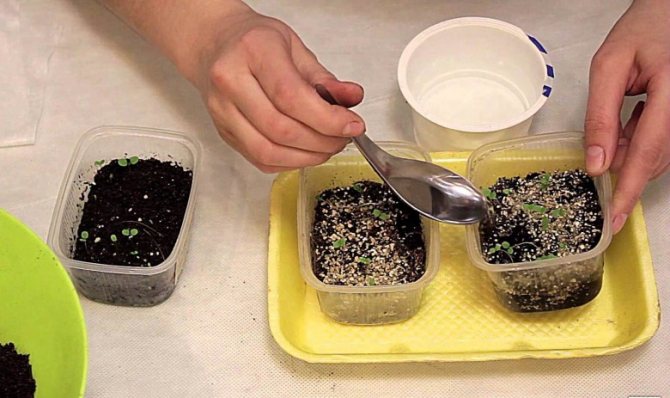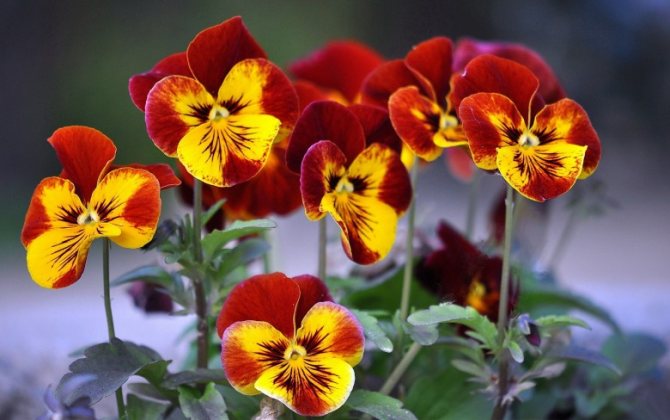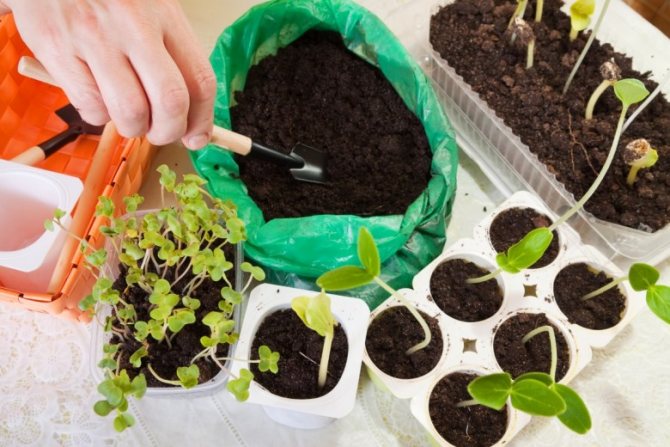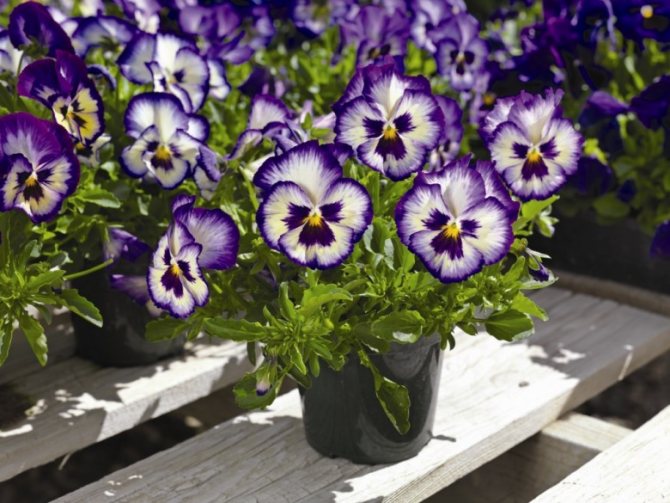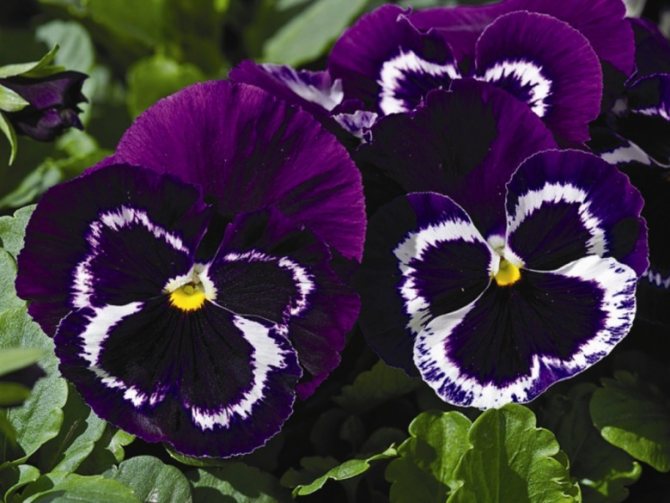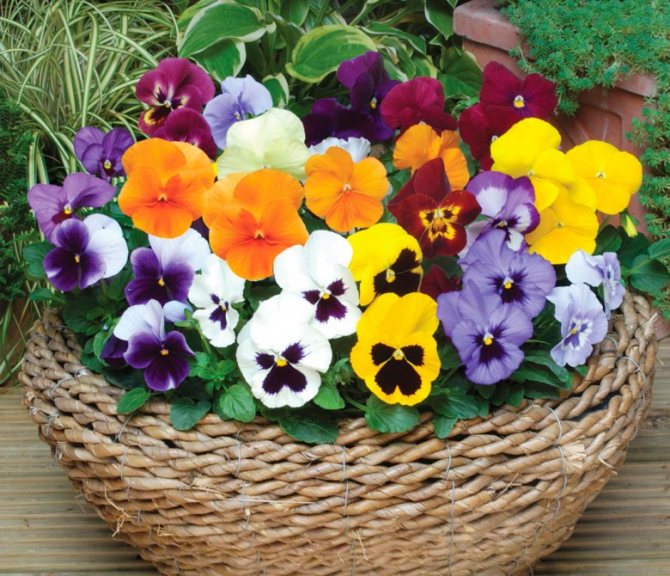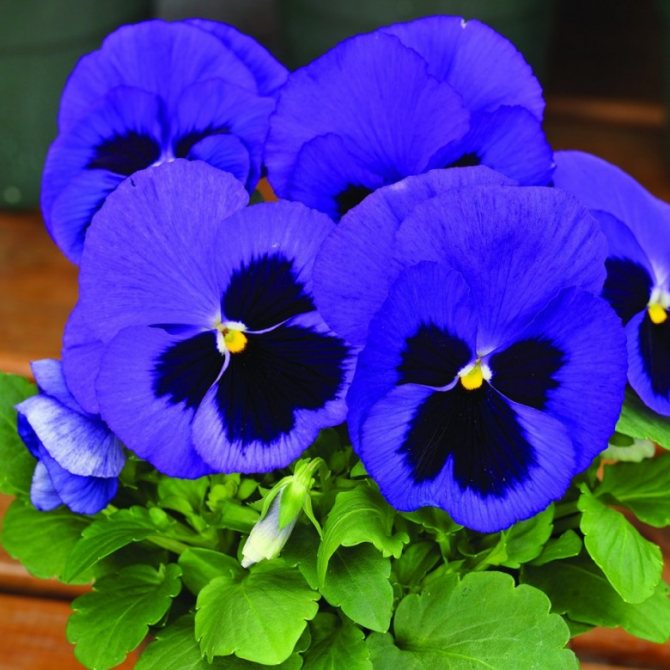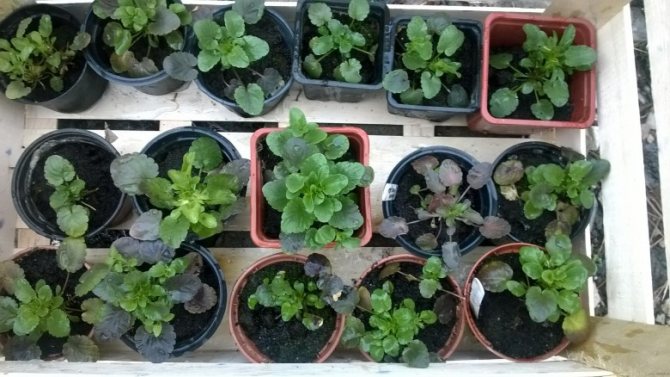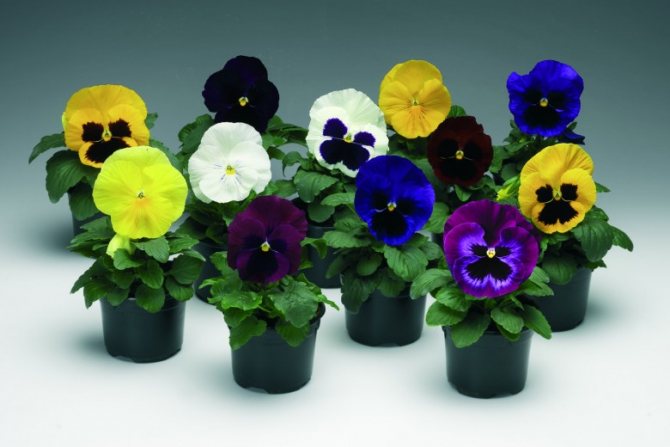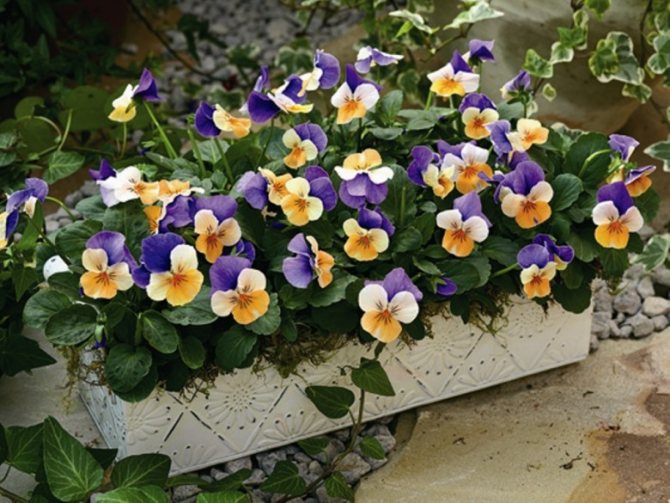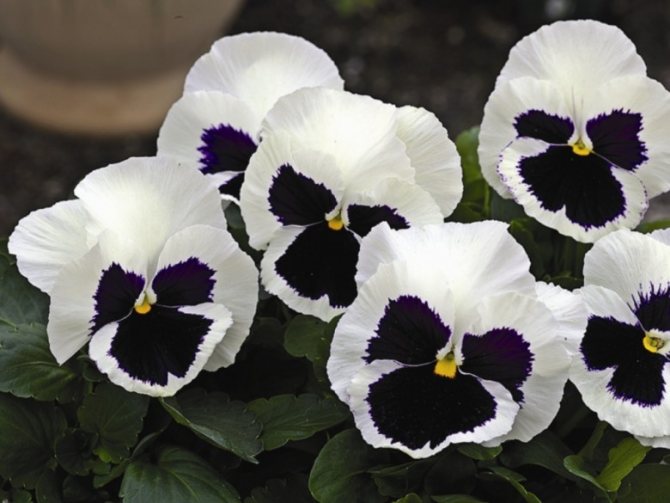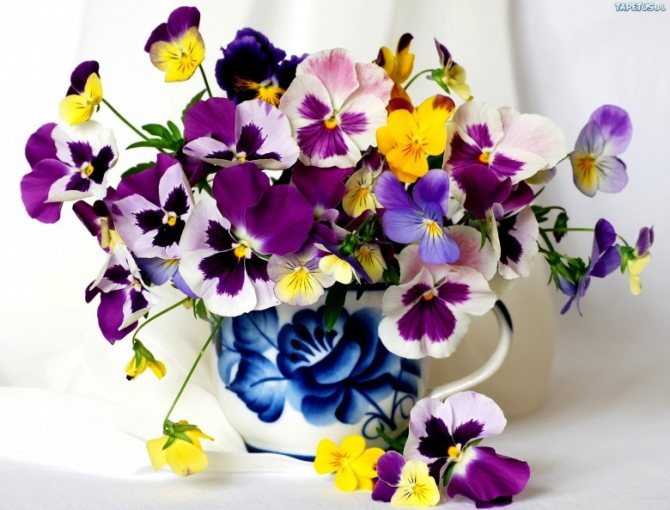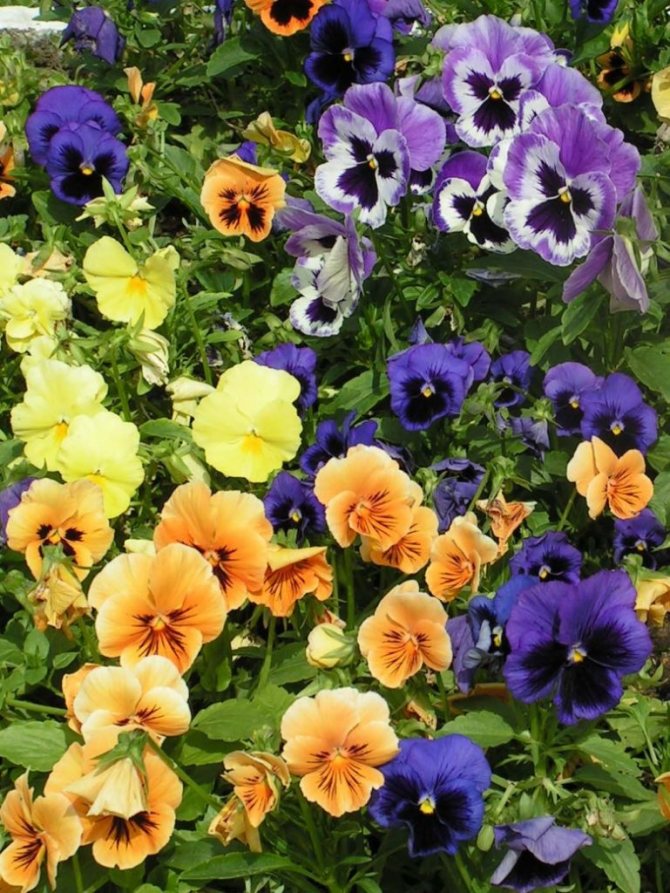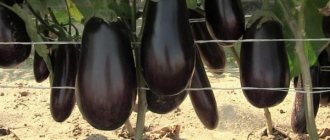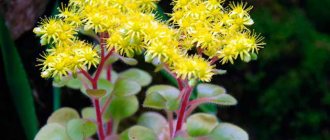Viola is a beautiful and unpretentious flower that is often used to decorate gardens, flower beds and balconies. It stands out among other popular plants not only for its aesthetic appeal, but also for its affordable price for seeds and seedlings.
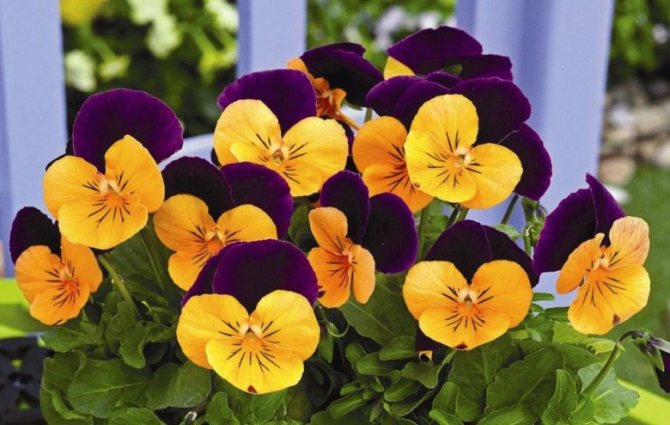
For little money, you can get a gorgeous, well-kept balcony or garden plot that will delight with its flowering for quite a long time. After all, in addition, it will not be difficult to grow beautiful viola bushes from seeds at home.
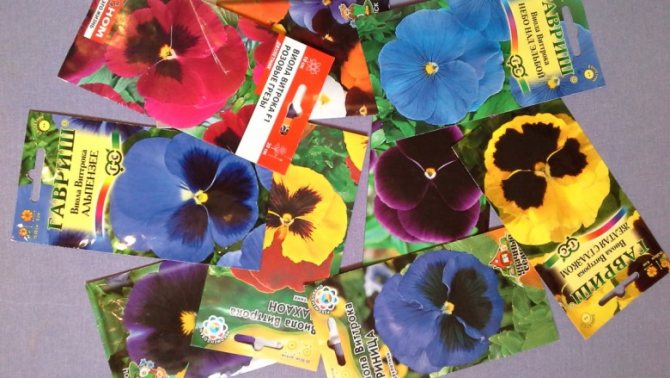

Viola and pansies are the same thing?
Viola is the Latin name for the violet genus, which numbers from 500 to 700 species (according to various sources). Representatives of this genus are found throughout the world in regions with a temperate climate. The largest concentration is in Japan, Andes, North America.
From time immemorial, the Russian people have called the tricolor violet, widespread in the wild nature of Russia, pansies. In gardening practice, this name was also assigned to Wittrock's hybrid viola - for specimens with a peephole.
Therefore, the question of how the viola differs from the pansies is quite interesting. Tricolor violet, Wittrock's viola (with "eye") and pansies are one and the same. All other types of viols remain viols, but the name pansy is no longer applied to them. What kind of "eyes" are these without an "eye"?
Pansies or viola (violet) tricolor is a wild, rather simple, nondescript plant. Breeders of the 17th century drew attention to it and began to use it as a material for breeding new varieties.
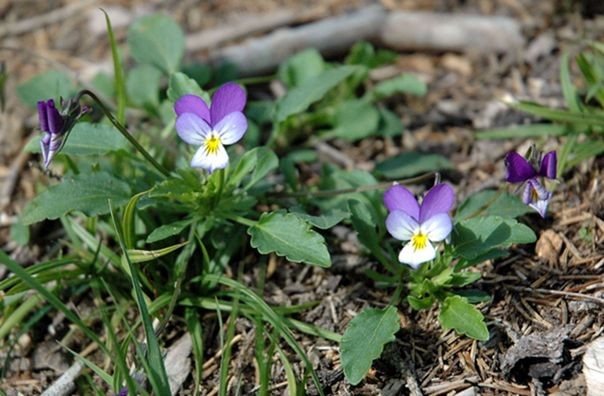

Nondescript and simple - the one that started it all
Crossing the "tricolor" with other wild varieties - Altai, yellow, horned - led to the emergence of hybrid forms, so unlike the maternal ones that they were taken into a separate species. He was given the name - Viola Wittrock. A huge number of molds were selected and sorted into varieties.
19th century Europe was delighted! Literally seized with "eye addiction", she called these masterpieces "the best flowers ever grown from seeds!"
In the second half of the 20th century, the craze for heterotic F1 hybrids began. Like any culture, this event is only beneficial for the viola. They became brighter, larger, more velvety, more symmetrical. Increased immunity, increased flowering time. Today, the species and varieties, for the most part, have remained in the collections of amateurs. The basis of the industrial assortment is now made up of bright hybrids.
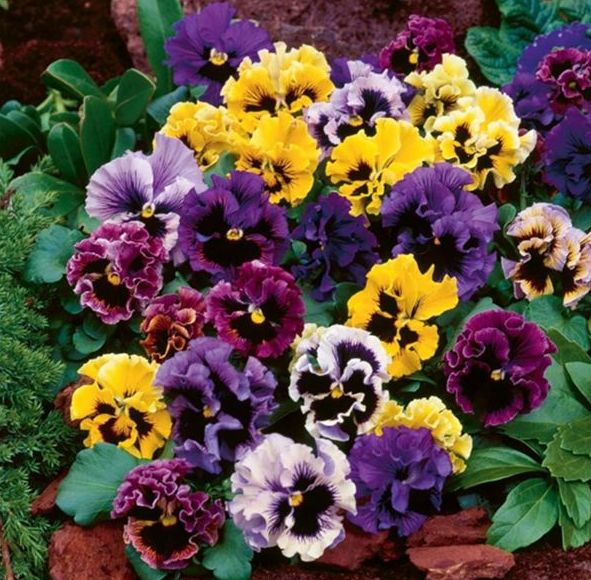

Vittrock's viola assortment is constantly updated with new forms. Rococo variety
How long does viola bloom?
In a broader sense, life expectancy depends on the type and method of cultivation. Flowers can be annual, biennial and perennial. As for the question of how long the viola blooms (during the season) - with proper care, it can bloom for 16 weeks (until autumn).
How to grow viola
The duration of viola flowering depends on the timing of planting the plant in the ground. The bush will delight with its flowers from March to May or from the beginning of August until the first frost. Viola hybrid varieties bloom several times per season.
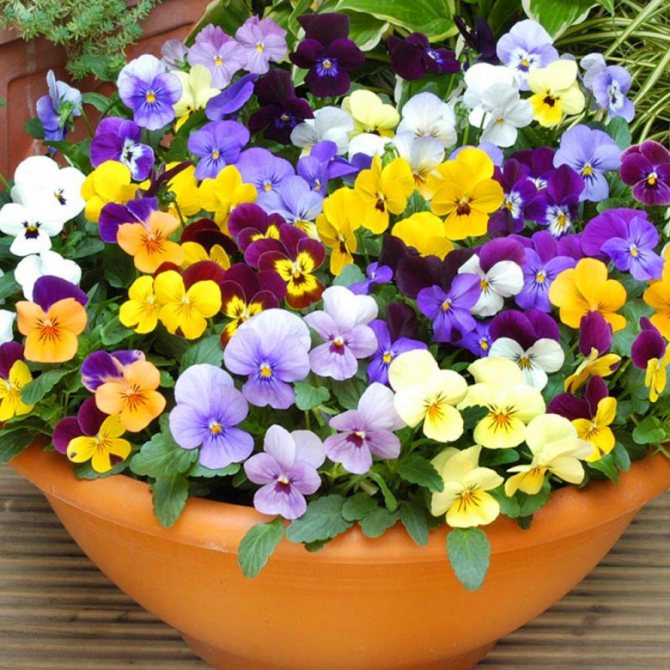

Since this flower is resistant to cold weather and quite shade-tolerant, it can easily endure even harsh conditions. The only thing is that in shady places on the viola fewer flowers are formed.
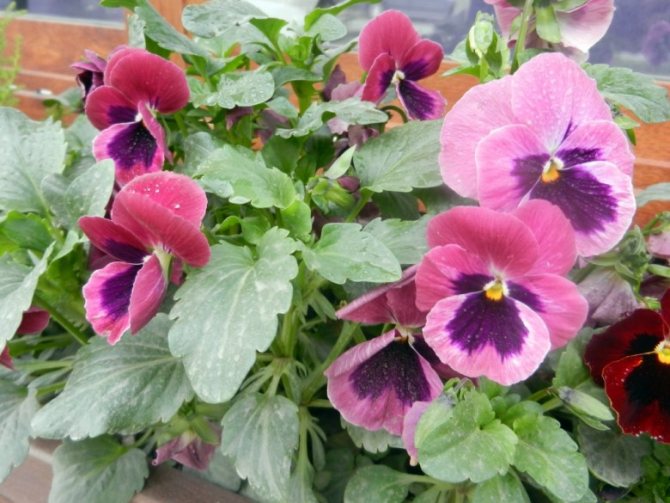

Loamy soil is ideal for her. There is a wide variety of ready-made seedlings of this flower on sale, but the price for it is quite high. Such seedlings can be grown independently from seeds. These photos of growing viola will clearly demonstrate how to do this.
When to plant viola on seedlings and in the ground
Sowing in the ground is practiced in June or even July. At the end of August, matured plants are transplanted from the school to a permanent place in the flower garden. For the winter, flowers are insulated with sawdust, straw, agrotechnical cloth. In spring, plants grow quickly and bloom with the arrival of heat. Florists note that with this method of cultivation, viola blooms profusely and for a long time.
The seedling method is practiced in regions with cold winters, where the plant cannot withstand frost, even under cover. The seeds are sown for seedlings in February, providing the seedlings with additional lighting. Young viola is planted in the ground at the end of May.
Dates of sowing viola seeds, depending on the region
Through seedlings, pansies are grown in the Moscow region, the Leningrad region, in the Urals and in Siberia. The seeds are immersed in the ground in February - early March. It is impossible to grow strong seedlings without increasing daylight hours to 14 hours.
Viola is planted on flower beds after the establishment of warm weather, in late May - early June. In Siberia and in the north, it is practiced to place viola in flowerpots and pots, which are placed in the garden or on the balcony. In the event of a cold snap, the flowers are carried away into the warmth.
In the middle zone of our country and in the south, you can sow pansies in the ground in mid-to-late June. In August, when the summer heat subsides, the seedlings are transplanted to a permanent place.
In the southern regions, the viola is not covered for the winter, it is enough to slightly spud the base of the bush with earth. In the middle lane, the flowers are insulated more thoroughly, covered with sawdust or shavings "with their heads". They remove the shelter in the spring, with the arrival of heat.
Favorable days for sowing viola according to the lunar calendar
| When to plant viola for seedlings and in the ground in 2019 | |
| Sowing seedlings |
|
| Disembarkation in a flower garden | May 18 or 28, June 4-6. |
| Sowing in open ground |
|
| Transfer to a permanent place | from 21 to 23 and from 26 to 28 August. |
It is undesirable to engage in sowing and transplanting plants on such days:
- February - 4, 5, 19;
- March - 6, 7, 30, 31;
- April - 5, 19, 27, 28;
- May - 5, 19, 24, 25;
- June - 3, 17, 20-22;
- July - 2, 17, 18, 19;
- August - 1, 14, 15.
Observing the above recommendations, the florist will grow healthy and beautiful flowers.
Description of the plant
Viola is a herbaceous plant representing the violet family and numbering about four hundred different species. It can be annual and perennial. Both varieties of flowers are grown in the garden, which are also known as tricolor violet and pansies.
Viola grows in the wild in countries with subtropical climates. It can be found in Africa, Australia, America and New Zealand. Some species of pansies grow in temperate continental climates in European and Asian meadows.
The viola forms a compact bush about 15-20 cm high (see photo). A long peduncle (25-30 cm) is formed from the rosette, on which a single flower sits, the diameter of which can reach 5-8 cm. The color of the petals is bright and juicy. It usually includes three colors. But currently, single-color varieties have been bred.
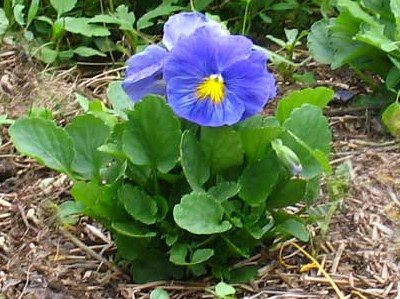

Viola begins to bloom either in early spring or late summer. In the first case, the flowers fade in June, and in the second, they continue to open until mid-October.In pansies, fruits are formed in the form of boxes with drop-down valves.
Viols are used in landscape design to decorate long rectangular flower beds (rabatok) and borders. It is framed by flower beds and covers the empty spaces between medium and tall perennial flowers. Violets with small flowers are suitable for decorating an alpine slide or rockery. Some varieties are suitable for container growing.
Reproduction of viola - planting on seedlings and in the ground
Viola is a flower, more often propagated through growing from seeds, less often vegetatively (cuttings). They are surprisingly flexible.
They can be grown as an annual, biennial and even try to make them bloom in the third year.
Viola is by nature a plant whose flowers appear in the second year. But growing seedlings from seeds allows you to achieve flowering in the first year of life. The seedling method is also preferable if:
- we are talking about purchasing a bag of expensive seed;
- a specific number of copies is required.
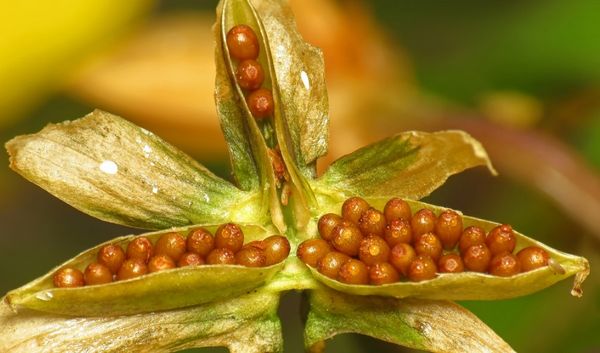

As an annual (seedling)
In the matter of growing viola from seeds at home, you need to follow a few simple conditions.
On average, viola blooms 2-3 months after germination.
The easiest way is to buy a ready-made soil mixture "Universal", "For blooming" or "For violets" in the store and add a little river sand to it. You can prepare the potting soil yourself. To do this, mix in equal proportions sod, leafy soil, peat, sand and humus. Steamed well.
The agrotechnology of growing viola from seeds is a simple process. It is enough to know some of the nuances. So, how to plant viola seedlings with seeds:
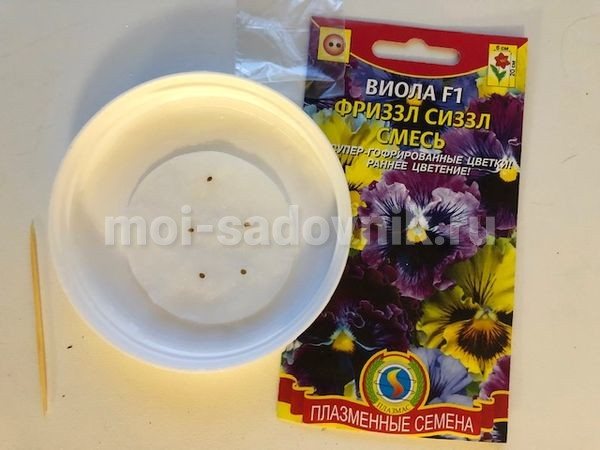

To speed up the awakening of seeds, before sowing, you can hold them between two cotton pads dipped in a growth stimulator.
The container is filled with moderately moist soil mixture. You can also use peat tablets.
The seeds are spread over the surface. Do not deepen!
Additionally moisten from a spray bottle. The tray is covered with glass or placed in a transparent bag. Ventilate daily.
Since violet seeds germinate better in the dark, place the container in a dark, warm (+ 18 ° С..20 ° С) place. Seedlings appear in 7-20 days.
With the emergence of shoots, the tray is rearranged in a lighted place (on a windowsill or under a phytolamp). The cover is removed. At this stage of development, the temperature regime is not lower than + 15 ° С..17 ° С.
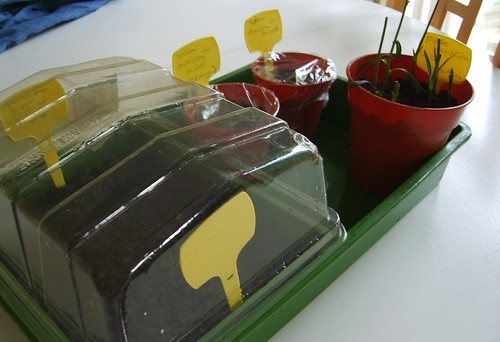

Photo by ripplestone garden
They continue to look after the seedlings. It is very important to maintain a moderate water balance (do not overfill, do not overdry).
With the appearance of two true leaves, the seedlings are planted:
- Separation can be done in several stages: first, according to the 5x5 cm scheme, later into individual containers.
- And you can immediately in separate glasses (for example, 1-2 in a glass with a volume of 180-200 gr).
2 weeks before disembarkation, the seedlings begin to harden, accustoming them to open air. On sunny days, it is exposed in partial shade, in order to avoid the appearance of burns on the leaves and drying out of the soil in the cups.
Advice! If there is a balcony, greenhouse or greenhouse, with the onset of heat, you can transfer containers with seedlings there. The main thing is that the temperature in the "room" where the seedlings are located does not drop below 0 ° C at night! Optimally - not lower than + 8 ° С.
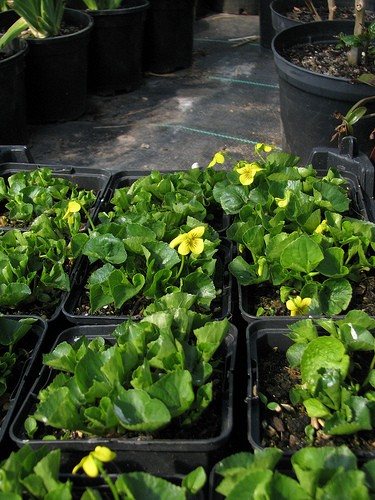

Seedlings tolerate transplanting well at any age, and even flowering Photo from peganum
Video: planting viola seeds for seedlings
If the viola seedlings are pulled
When transplanted into individual containers, elongated specimens are buried in the ground up to the cotyledonous leaves. The soil is slightly compacted, watered along the edge. If it has settled, add more, without falling asleep at the same time the cotyledon leaves.
If the seedlings grow poorly
There may be several reasons for the poor development of seedlings. And the issue is not always a lack of nutrition. Too high temperatures (above + 20 ° С), waterlogging, drying out, lack of light.
First, you need to create favorable conditions for growth, and then regularly feed with fertilizer in the ratio N: P: K = 14: 1: 4 - at the initial stage and gradually increasing to 14: 4: 14.
Planting viola seedlings in the ground
Viola is planted in the ground (seedlings) at the end of May with a slight deepening (up to 1 cm) of the root collar. Water well.
The soil. Any, preferably loamy, cultivated land will do. The looseness and air permeability of the soil is more important for "anyutki" than its fertility. Heavy, clayey areas must be artificially "lightened" by the introduction of peat, humus, sand. Before planting seedlings, the soil is well dug up.
Lighting. Viola loves bright sun, can grow in a slightly shaded place and cannot stand deep shade. But in this matter you have to choose:
- In sunny places, it blooms earlier, brighter and at first larger, but due to overheating in the heat, it loses its decorative effect.
- In light shade, it blooms longer, but smaller and not so bright.
How far apart should the viola be planted? Usually, there is a recommended planting pattern on the package with specific seeds. It is standardly:
- 20 * 20 cm when planting with an island, group, flower bed;
- with a distance of 15 cm between the bushes when it comes to the curb line.
Viola ampelous: how many bushes to plant in a pot. To turn out as "in the picture" - with a distance of 10-15 cm, at the rate of 1-2 liters of soil mixture per bush.
As a biennial (in open ground)
The traditional way of growing as a biennial. Sowing is carried out in June in the schools and provides them with proper care throughout the season.
- Water in moderation.
- Shade immature seedlings on hot days.
- Cut (according to the scheme 5x5 cm) with the appearance of the first true leaves.
- The first fertilizing with mineral fertilizer - 7-10 days after the pick. Then - once every 10 days, alternating organic (humates, a weak mullein solution) with mineral ("Kemira", nitrophoska).
- Loosening, removing weeds.
- Transplanted in August-September to a permanent place in prepared soil.
- Mulch with a 3-5 cm layer of peat.
Do not fill up the sockets "with your head". In warm winter, they can dry out.
Is viola afraid of spring frosts?
Grown from self-seeding or biennial, it adjusts itself to the weather. Seedlings can be safely planted in open ground only after the end of the spring frost. You can land at the end of April and track the weather forecast, throw in agrofibre if necessary.
Like a perennial
In the literal sense of the word, perennials are only a few wild-growing, capable of independent vegetative reproduction. But given that, from the point of view of botany, all plants that live for more than two years are considered perennial, a viola that blooms for 3 years of life can be safely attributed to this category.
Biennial plants can be encouraged to bloom again (at 3 years of age). To do this, in October, peduncles are pruned, leaving only dense leaf rosettes. There is a chance that some of the overwintered specimens will bloom again.


Wild Viola Photo by anro0002
Cuttings
Planting viola on seedlings by cuttings is a method mainly used in greenhouses for the propagation of elite varieties. Lovers of cuttings can try to repeat the experience, since propagating viola (of their favorite varieties) by cuttings is not difficult at all.
In addition, with this method, varietal and hybrid qualities are preserved for a very long time.
The tops of green shoots with 2-3 nodes are cut off and rooted. Cuttings take about a month to root.
- Early cuttings - from May to July. In this case, new plants can bloom in the summer or early fall.
- Late grafting - August. Bloom will come next spring.
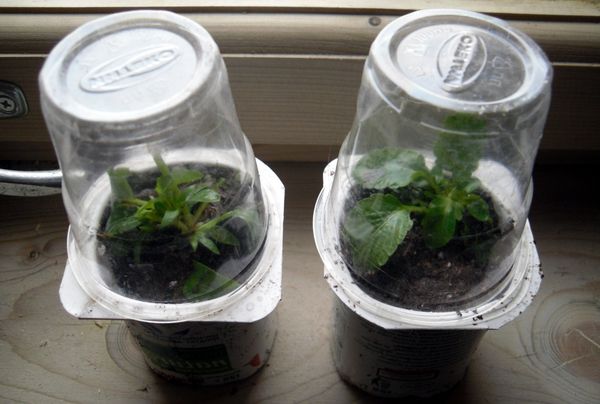

For information! In addition to propagation of viola by cuttings, there is another way - by layering.This is the most rarely used method.
Viola cultivation methods
There are several ways to grow a Vittrock Viola:
The choice of a method for propagating flowers depends on the goals of the grower and the final result that he will receive. Flowers grown in annual culture bloom in the middle of summer in the year of planting, but this method is carried out using seedlings. The desire of the grower to admire the flowering from May to October is feasible if the seeds are sown in the summer. In this case, the violet will bloom next year. An existing violet bush can be propagated even by flowering ones. At the same time, the plant will calmly survive the division and will not suffer, continuing grow and bloom.
Seed breeding method
To cultivate a plant, you can purchase seeds from a specialty store or use the seeds of flowers that have grown on the site before. Pay attention to the expiration dates of the seeds. If seedlings do not appear within 10 days, then you shouldn't wait for them... Germination time depends on the variety. When purchasing seeds, pay attention to this. The manufacturer must indicate the germination time for a particular variety.
Before planting seeds, if desired, they should be pre-prepare... The seeds are soaked in a stimulant solution for 24 hours. You can apply root, zircon or epin. The decision on which drug to prefer is taken by the florist independently. Seed germination is low, so a large number of seeds should be planted. Approximately 50-60 pieces per garden bed half a meter.
You can plant seeds from May to early June. In this case, the plant will bloom at the end of August or September under good weather conditions. In winter, viola leaves with flowers. The next year, flowering begins in May.
The practice of planting seeds before winter is widespread, in August - early September. During this time, the plant sprouts, develops the root system well and leaves healthy during the dormant period. The violet will bloom next year.
Care after planting and throughout the season
Knowledge about the preferences of the viola flower: what kind of soil she loves, moisture, illumination, you can avoid diseases as much as possible and significantly extend the flowering period. Viola garden looks very different from wild-growing "great-grandmothers". Planting and leaving, however, is exactly the same for her.
Regular (shallow) loosening will provide air access to the roots. This procedure is especially relevant after rain and watering. Mulching is recommended in hard-to-reach planting areas.
Watering and feeding
The soil around the bushes should always be moderately moist. With regular drying, flowering times are significantly reduced. When waterlogged, the roots rot, diseases develop. This is an important point in how to properly care for a viola in the garden!
- When preparing the site for planting, humus is introduced (you can additionally superphosphate, making sure that the roots do not come into contact with it).
- The next feeding for viola is late April - early May (budding period). Complex mineral fertilizer for flowering.
- Then - once every 2-3 weeks with fertilizer for flowering.
How to feed viola in a pot for abundant flowering. Any mineral fertilizers "For blooming". This should be done regularly - once every 7 days.
How to fertilize viola in the soil for abundant flowering. Fertilizers for flowering every 2-3 weeks.
Trim and pinch tips
Do I need to pinch the viola for better tillering? Many plants recommend pinching over 3-4 or 5-6 real leaves to improve habit. Modern hybrids do not need to be pinched. The correct shape of the bush was originally laid in them.
In order to prolong the flowering of the viola as much as possible, the boxes in which the seeds are tied must be removed in a timely manner. This is especially true for specimens planted in pots, hanging pots, garden vases, containers.
After flowering, you can trim the bushes.It is possible that after a few weeks, they will bloom again.


Regular boll removal stimulates the appearance of new flowers. The aging of the bush is delayed Photo by Amanda Kae's Photoz
Diseases and pests
In theory, the plant is susceptible to many diseases:
- powdery (and downy) mildew,
- spotting,
- rust,
- smut,
- blackleg,
- gray and root rot,
- various viruses.
Viola diseases are best prevented by observing cultivation techniques. Dealing with them can be difficult and not always successful.
But there is good news too! Modern, hybridized forms have good immunity and are resistant to most of the listed diseases.
Pests:
- The most dangerous pests are root parasites (nematodes, pratilenchs, paralongidorus). As a control, only the removal of plants (followed by burning) and disinfection of the soil.
- Clover scoop, violet mother-of-pearl, aphids on viola are less dangerous, as they are external parasites. You can fight it with insecticides or folk remedies.
Why do the leaves turn yellow?
If yellowing and curling of the leaf edges is observed, this may be a sign of spider mite infestation. This occurs most often during the dry season. Severely damaged specimens are removed. The rest are sprayed with bladan (5-8 grams per 10 liters of water), or lime-sulfuric broth.
Watering and feeding rules
The main requirement for good growth and flowering of violets is timely watering. The root system of flowers develops in the soil at a depth of 15-20 cm, therefore, in dry summers, it should be watered more often, but only when the top layer dries up. Violet has enough natural moisture, which comes with precipitation.
Timely removal of faded buds will facilitate the development of new ones. So the grower will have flowering plants all season Dry leaves should also be removed.
You can fertilize the bushes once a month. Purchase fertilizers for flowering plants with the least amount of nitrogen.
For the winter, the violet is covered with spruce branches or leaves.
Viola is an ornamental plant used to decorate the backyard and form bright flower beds. This is an unpretentious and very hardy flower that easily tolerates frequent transplants even during flowering. How to grow viola in your garden, and what should be the care for it.


Species, varieties and hybrids
In nature, there are up to 500-700 species (according to various sources) of violets (lat.Viola). In meadows, swamps, in the forests of the European part of Russia, you can find up to 20. Some specimens are found in public parks and cemeteries. In garden culture, wild options are practically not used anymore. They were supplanted by cultural forms and hybrids.
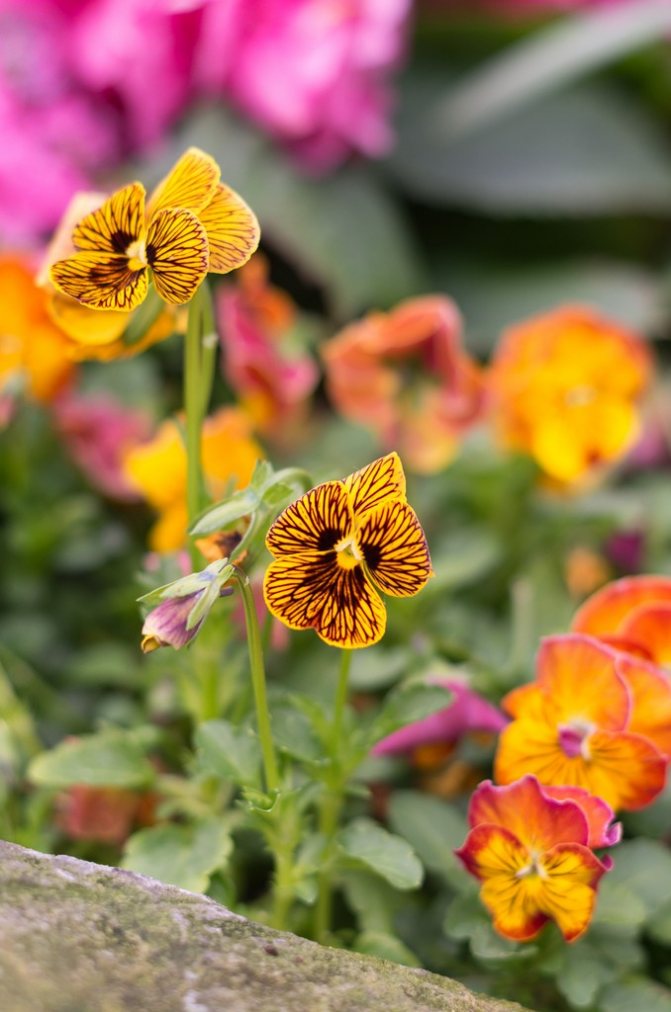

Photo by Lexie Stevenson
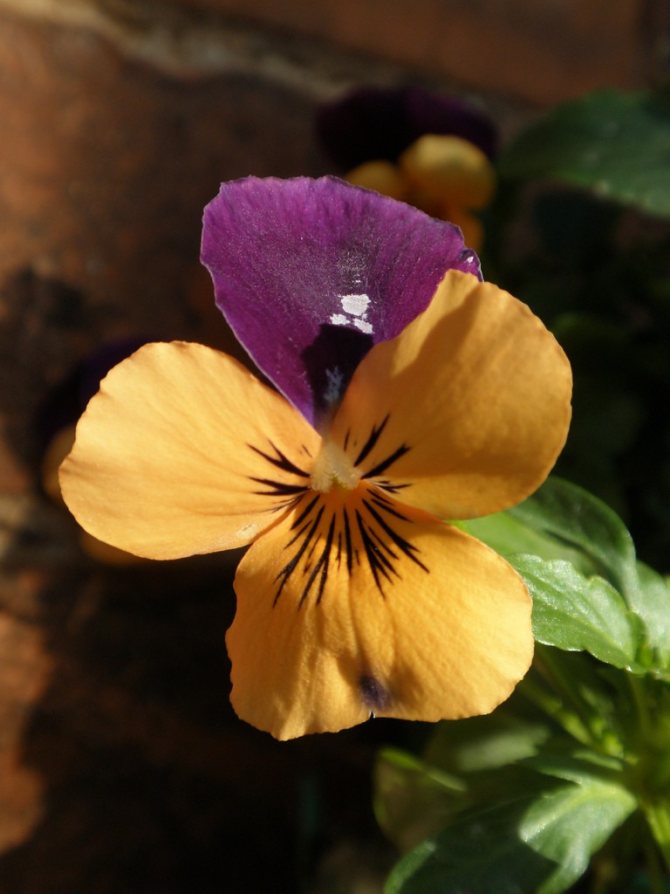

Photo by amandabhslater


Photo from kuromeri
Everyone knows what this wonderful flower looks like - viola. But thanks to the work of breeders there is a constant renewal of the "appearance" of this charming lady. The most cultivated today is the Vittrock violet garden hybrid, isolated in a separate group. The number of varieties is already in the hundreds.
For order and convenience, they are classified into groups depending on the diameter and shape of the flower, habit, abundance and timing of flowering, winter hardiness.
Choice of place and conditions of detention


Cultivation of viola is possible only if certain conditions of detention are observed. Let's find out what is needed for the healthy growth of a tricolor violet.
Lighting and location
Viola loves bright sun, but it shouldn't shine on the flower bed all day long. Therefore, it is better to choose a place so that closer to the middle of the day a shadow falls on it. You can plant a violet near a high fence, against a wall or in a garden.
Temperature
The optimum temperature for growing viola in the garden is + 18 ... + 20 o C.But the flower can withstand night frosts and even light frosts. And in the afternoon, he tolerates heat up to +30 o C and higher.
Air and humidity
Flowers thrive in moderately humid air (50-70%). Waterlogging can lead to the development of fungal infections. It is best not to place pansies in a draft.
Priming
The tricolor violet loves to grow in humus-rich, loose and moist soils with a neutral reaction. Flowers love when black soil, humus, river sand and high moor peat are present in the soil. They respond well to the introduction of wood ash: it enriches the soil and neutralizes acids in it.
Sowing dates
The most favorable time to plant violets will depend on the climate in your area. In most of Russia, they are planted in the spring, in mid-March, but if you live in a warmer region, then you can start planting in winter. Many gardeners plant viola in February, and some even in January. If, on the contrary, you live in a slightly colder climate, then planting should be delayed at least until April to allow the earth to warm up.
For high-quality growth of young violets light is very important, it is worth considering this when planting, because if there is not enough light, then the sprouts will stretch out and, most likely, die. Many gardeners even recommend artificially extending daylight hours to 14 hours in the early stages of growing.
It is best to plant the viola in partial shade, for example, under a tree from which diffused light falls. If you plant it in a place where direct sunlight will fall on it, then the plant will quickly fade and wither.
You can plant a viola in the shade, it will still grow, but be prepared for the fact that the density of flowers on it will then be much less.
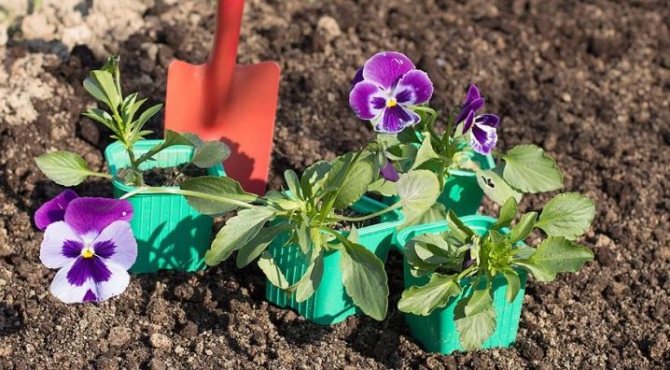

In general, it is permissible to sow viola in several terms. If unfavorable weather lasts for a long time, then planting seeds in May is quite acceptable. In this case, the flowers should bloom closer to August, and flowering can last until winter.
When choosing the optimal month for landing, it will be useful to seek help from the lunar calendar. Scientists have long noticed that the growth of violets is very strongly influenced by the phases of the moon. By planting flowers at the right time, you can achieve faster growth and more lush bloom.


A bit of history
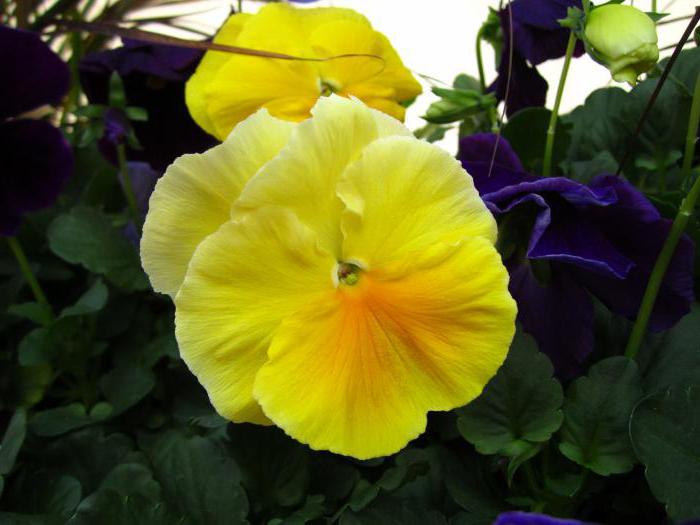

Viola, whose flowers are one of the oldest garden plants, has been known to botanists since the 16th century. Even in ancient Greece and Rome, people used to decorate rooms with them during the holidays. But they began to cultivate it only two centuries later. The first to do this was F. Miller, the famous English florist.
In Russia, the violet appeared at the end of the 18th century, thanks to the famous botanist P.S.Pallas, who studied the flora of Altai. It was he who brought to St. Petersburg a violet, which is now called Altai.
At the beginning of the 19th century, the well-known pansies appeared in Europe - Wittrock's hybrid violets. They combined the beauty of three types of violets: Altai, yellow and tricolor.
Viola care
Viola is a flower that is not particularly susceptible to pests and diseases. Due to possible infections, leaves begin to turn yellow and become stained, white bloom or rot appears. Why is this happening? Basically, diseases are manifested from improper care, in particular, lack or excess of moisture.
Proper care helps the seedlings get used to the new environment and begin flowering sooner.
Watering mode
It is necessary to maintain optimal soil moisture: drying out or waterlogging is unacceptable.
Important! After watering, it is necessary to carefully loosen the soil (but only if it is not mulched).
Weeds must not be allowed to grow, which have a detrimental effect on the plant.
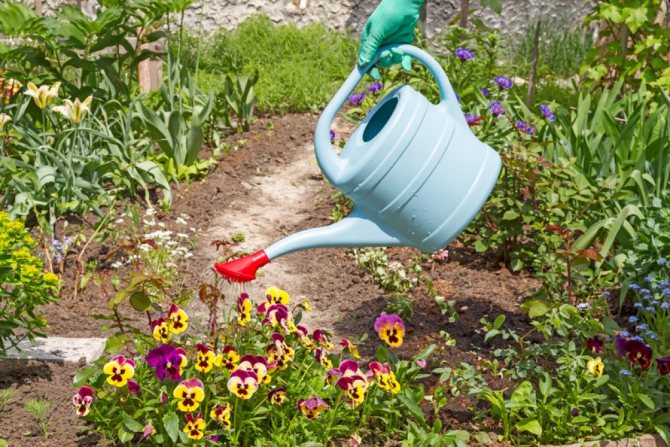

Watering
How to feed viola for abundant flowering
Mineral fertilizers are used as top dressing (agriculture, luxury fertika).
Features of care during flowering
In a dim sun, the flowers will be larger than in the shade.Faded peduncles should be cut off so that the plant grows further and retains its decorative effect. Do not forget about regular watering, as without it, flowering can stop altogether.
Features of care during the rest period
After flowering, a dormant period begins. At this time, most of the processes in the plant slows down or stops completely. At this stage, the stems of the plant are cut, leaving about 5 cm above the ground, and fed.
Before pruning, the seeds are collected: they are formed in small boxes in place of flowers. They are collected, dried indoors and stored in the refrigerator.
Note! If you do not collect the seeds, the site will be overgrown with viola recklessly worse than weeds either in the same fall or next spring. But you can turn the situation in the other direction and use the self-seeding of the plant as reproduction, removing excess shoots.
Planting process
As mentioned earlier, viola usually blooms in the second year, but gardeners have found a way to make it bloom in the first year of life, or, conversely, you can grow a viola, which will bloom only after 2 years. If you want a flower to bloom in a few months, then you need to plant it with cuttings and grow it only at home. Cuttings are planted in the same potting mix, which will need to be distributed among the pots.
If you decide that it is better to plant the flower in the open field, then do not forget to prepare the planting site, and then follow the next instructions step by step.
- To begin with, the seeds need to be treated with fertilizer that accelerates growth.
- Then you need to prepare the potting mix and pour it into a large pot or cassette.
- In the soil, you need to make small grooves (half a centimeter deep), where we will place the seeds.
- From above, the seeds need to be sprinkled with earth (or better with a homemade mixture from the soil).
- Next, you need to properly water the plant so that the earth is completely shed, but without eroding the soil, otherwise the opened seeds will die.
- To retain moisture in the soil, you can mulch it with fine sawdust.
- After that, you need to put the seedlings in the sunny part of the house (preferably in partial shade) and watered the soil as it dries.
- After about 2-3 months, you will be able to start replanting seedlings in prepared soil, the optimal distance between them is 20 centimeters.
- Be sure to loosen the soil before planting.
- Viola should be planted along with a piece of earth covering its roots.
- The holes you have prepared should be large enough to accommodate the seedlings freely. It is very important to ensure that the roots do not bend during planting.
- After placing the sprouts in the holes, fill the voids with the rest of the potting mix and compact well with your hands.
- After that, the sprouts need to be watered abundantly.
- At the end, the planting is mulched with dried leaves, hay and needles.
Content
- Listen to the article
- Growing conditions
- Growing viola from seeds Sowing seedlings
- Seedling care
- Viola's pick
- When to plant
- How to grow
- How and when to collect seeds
- Viola wittrockiana
brief information
Pansies - This is the unofficial name that stuck to the flower. Real name - Viola... And also the flower is called Tricolor violet... The plant can be grown as an annual as well as a biennial plant. Although it is possible to plant viola as a perennial, it will lose its decorative effect in a couple of years.
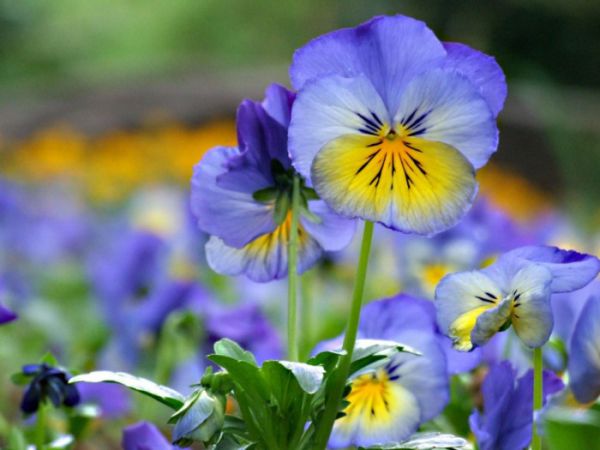

A gentle representative of the violet family is short, as a rule, its height ranges from 15 to 30 centimeters. Pansies can have a very beautiful color and pattern. This photo proves it:
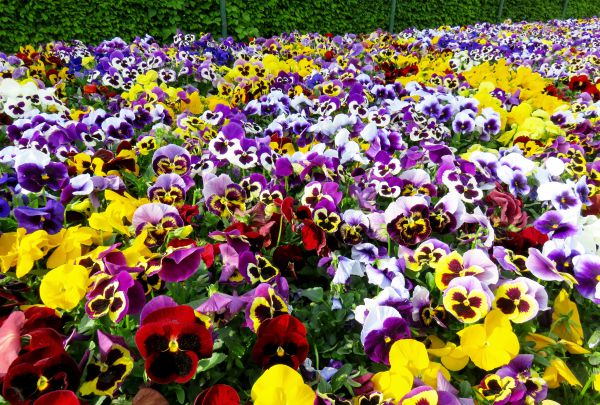

The plant is considered unpretentious. Viola looks very beautiful on alpine slides, in rockeries, rabatkas, next to small bushes. Consider photos that show how beautiful the flowers are:
Growing features
Viola can suffer from the following diseases:
- powdery mildew (white bloom with a gray tint on leaves and flowers);
- black leg (the base of the shoot turns black and dries up, the whole bush dies);
- mottling (brown or almost black spots on the leaves);
- gray rot (affects buds and flowers).
These diseases are caused by various fungi and develop when moisture stagnates in the soil. Treatment of violets consists in removing damaged parts of the plant and treating them with a 0.2% Fundazole solution. Sprinkling the bushes with wood ash or ground sulfur also helps against fungal infections. As a preventive measure during the rainy season, it is useful to spray pansies with Bordeaux liquid.
Various caterpillars become viola pests: they eat up the leaves of flowers to the holes. It is difficult to deal with them manually. It is best to treat plants with chlorophos or any insecticide (Aktellik, Inta-vir).
Viola is a compact and relatively stunted plant. But this does not prevent him from forming large flowers, reminiscent of elegant children's dresses of all kinds of colors. It can bloom at any time: in spring, summer or autumn. It only depends on when you plant the violets in seedlings or outdoors.
Delicate and cute Pansies know everything, and I can't imagine my flower beds without these flowers. The most amazing thing is that among the many copies, not one is the same. There are a huge number of species and varieties of Viola (second name), so I try to periodically update and add new specimens.
Today we'll talk about annual and perennial viols, Vittrock's viola and other species, as well as what these plants are, what are the distinctive features of the varieties and how to make the right choice.
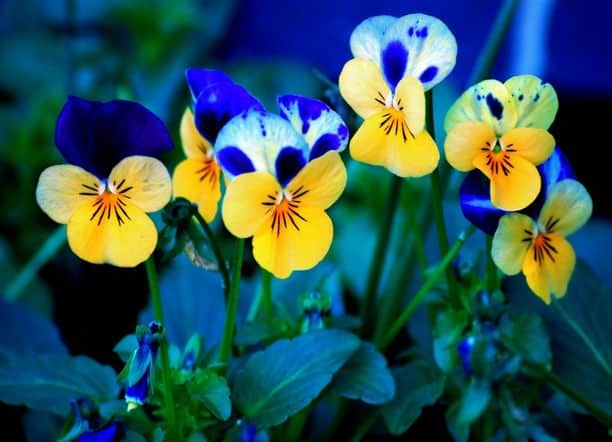

Useful video
We advise you to watch a short video about planting viola for seedlings:
Viola is an extraordinary flower. His tenderness and radiation of love - delights. The plant will be a lovely decoration for a garden, terrace or yard. You can grow it from seeds using the seedling method yourself, while the number of seeds from one package of seeds is enough for an average lush flower bed.
Found inaccuracies or inaccurate information? Any suggestions for improving this article?
Do you want to offer photos for publication?
Please help us make the site better! Leave a message and your contacts in the comments - we will definitely contact you!
Viola after flowering
Seed collection


Collecting seeds should be done at the end of flowering, and this time is approximately in August or September. After the flower withers, a small box appears in its place, inside which there are seeds. It will be possible to start collecting seeds only after the box turns upwards. The extracted seeds must be sprinkled on a sheet of newspaper and dried in room conditions. Then they are put away on the refrigerator shelf, where they will be stored. In the event that the boxes with seeds are left on the bush, self-seeding will occur. Seedlings, as a rule, are dense, and the first plants may appear in autumn or spring. If you do not want to grow viola through seedlings, then simply thin out the seedlings in a timely manner, and also, if necessary, you can plant them.
Wintering
Modern varieties of viola, which are perennial plants, are highly frost-resistant. If they are covered with dry leaves or covered with spruce branches, they will calmly endure a drop in air temperature to minus 30 degrees. If you are growing annuals, then after flowering is over, they must be disposed of.
Wintering, collecting seeds
Annual violets do not hibernate. Their aboveground part is removed and destroyed.And perennials are covered with a heap of dry foliage, sawdust or straw. This is enough for the viola to survive the winter.
After flowering, the viola forms fruit in the form of bolls. They contain seeds that can be harvested and sown next year. The timing of seed collection depends on the flowering time. In any case, you need to wait until the box is completely dry and, when squeezed in your hands, begins to crack and burst, releasing the seeds. At this time, they need to be collected. Store seeds in paper bags in a cool and dry place.
Growing seedlings


In order for the viola to bloom in the summer, it must be planted on seedlings in early March. You need to do it like this:
- Buy soil for violets at a flower shop or mix peat, humus and river sand in a 2: 2: 1 ratio. You can add a little black soil or garden soil.
- Fill the bowl with soil and make several grooves at a distance of 2-3 cm from each other.
- Soak viola seeds for 30 minutes in Epin or Zircon solution (2 drops per 1 liter of water).
- Remove the seeds and sow them in the grooves and cover them with soil so that the planting depth is about 4-5 mm.
- Moisten the soil and cover the bowl with foil, put it in a cool place (temperature about 15 ° C).
- When the first shoots appear, remove the film and transfer the container with the seedlings to an even cooler place (about 10 ° C). The room should be light enough. From time to time, the soil in the bowl needs to be moistened.
- When the seedlings have 2 true leaves, they need to be transplanted into a new container, observing the distance between the dived violets of 3-4 cm.
- After 14-20 days, make a second pick of the seedlings either into containers or into seedling cups according to the 6x6 cm scheme.
- Over time, the room temperature should be raised to + 18 ... + 20 ° C. Continue watering your seedlings.
Plants can be planted in the ground in May or early June.
Temperature
It is very important to choose the right temperature for seed germination. Ideally, if it is between 18 and 30 degrees. Even minor deviations from the norm can lead to the fact that the seeds will germinate much more slowly. However, already at the moment the shoots appear above the soil, the temperature can be reduced to 15 degrees, since the grown seedlings calmly tolerate the cold (but not frost). If you do everything right, then soon you will be pleased with the delicate, beautiful flowering of pansies.


Growing viola
Popular varieties with photos
Numerous varieties of viola are hybrid and are widely used to create flower beds and lawns, and decorate balconies and windows. Finding the right look for a beginner will not be as difficult as it seems.
Swiss giant
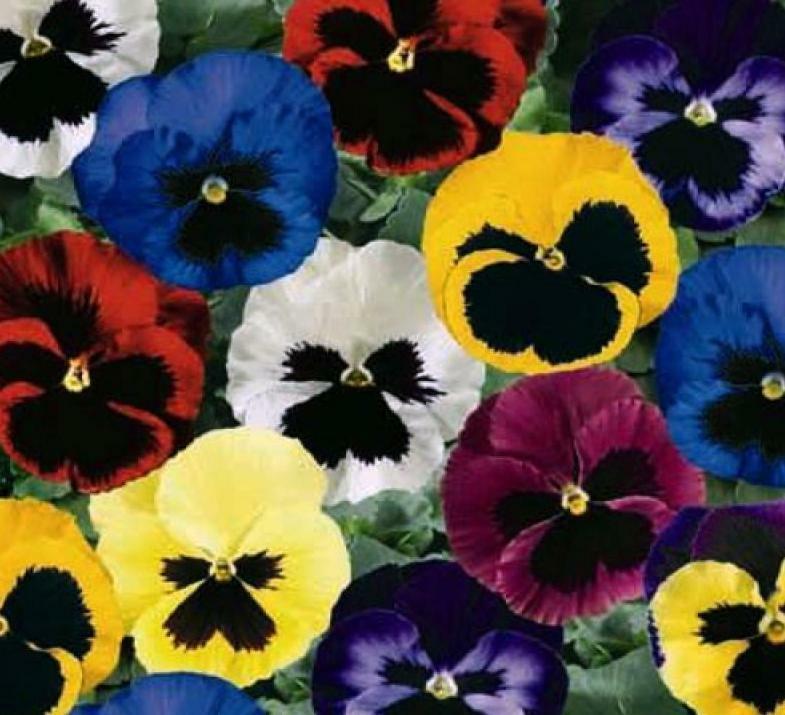

The variety with low bushes and large flowers was bred in 1927. Advantages: early and abundant flowering and frost resistance.
Wittrock


The most demanded among violas. Colored streaks and spots are clearly visible on the petals. Plain specimens are rare.
Rococo mix


Variety with highly corrugated petals, unusual appearance and bright flowers.
Terry lace


The variety has a high degree of winter hardiness, unpretentiousness and the ability to grow in any kind of soil.
Swedish giant
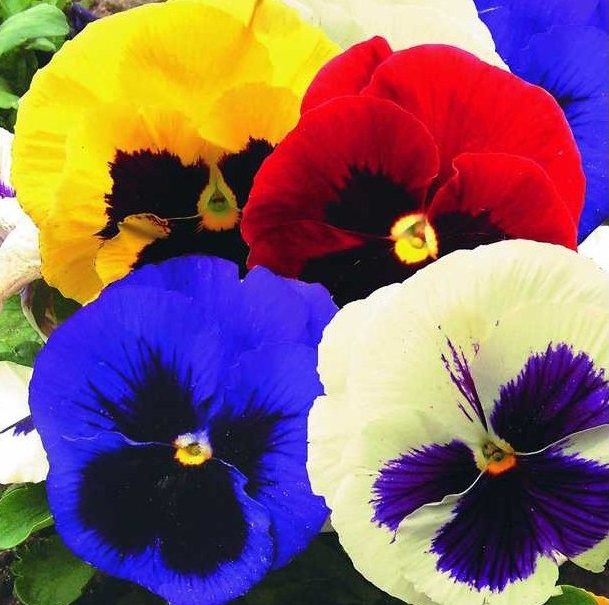

The owner of large (up to 8 cm in diameter flowers), is distinguished by the duration and abundance of flowering.
Little Red Riding Hood
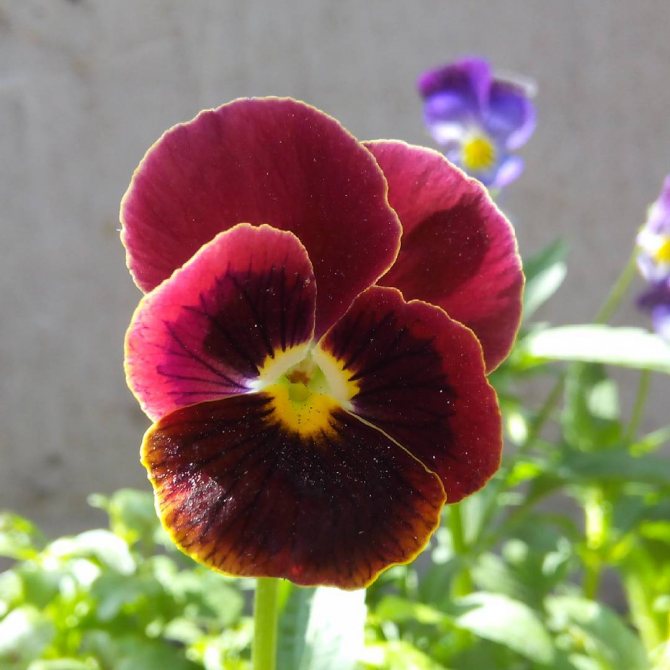

An impressive large-flowered, highly branched cultivar. Flowering begins in late April and lasts until the first autumn frosts.
Bambini


This plant has original flowers with a large yellow spot, similar to a cat's face.
Flamenco
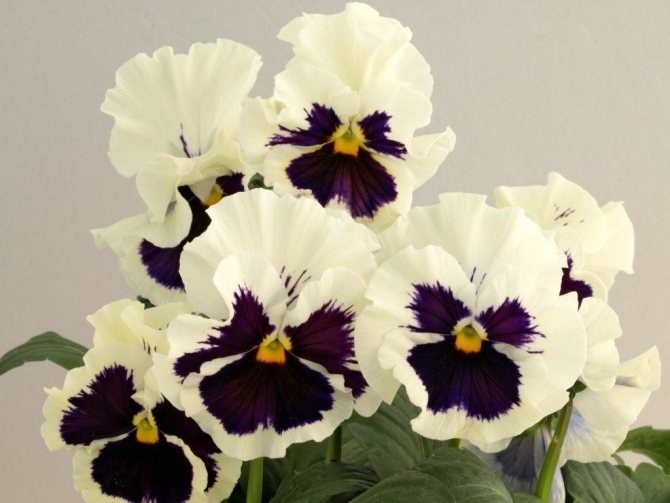

Fascinating in beauty, large flowers of this variety are distinguished by corrugated semi-double petals
Brittle


A gorgeous plant with large buds, most often used in various compositions for decorating flower beds and lawns
Jonise Jumping


Compact, abundantly flowering bushes grow up to four years old and are frost-resistant.
General information
Viola belongs to the Violet family, the main habitats of which are concentrated in mountainous regions, as well as in those places characterized by a temperate climate.
Viola in balcony boxes
To date, experts distinguish from 400 to 700 species of the Fialkov family. If it seems to you that you do not know a plant called "viola", then you are very mistaken, because each of us, if not grown at home this flower, then, in any case, saw and smelled it. And all because the second, common name for viola, sounds like pansies.
Viola Wittrock - garden pansies
The charming simplicity and low-key attractiveness of the flower attracted connoisseurs of beauty for a long time - two and a half thousand years ago, ancient European peoples used the plant to weave festive garlands and wreaths, as well as to decorate the premises where celebrations were traditionally held. The categorical popularity of the viola has survived to this day: now the garden viola is one of the most demanded plants among lovers of green "decorations". The variety of varieties allows you not to limit yourself in imagination.
Viola white
Viola is a plant with a life span of one year to long years of prosperity. Viola has a fibrous root system and an erect shoot. The leaves of the plant are equipped with stipules and can be either collected in a basal rosette or grow alternately along the stem. Viola's flowers are amazing, they are striking in their diversity: they can be monochromatic, two-colored, three-colored, double, wavy. The diameter of single flowers reaches 7 centimeters.
Viola vitrocca "ROCOCO"
Growing from seeds in the open field
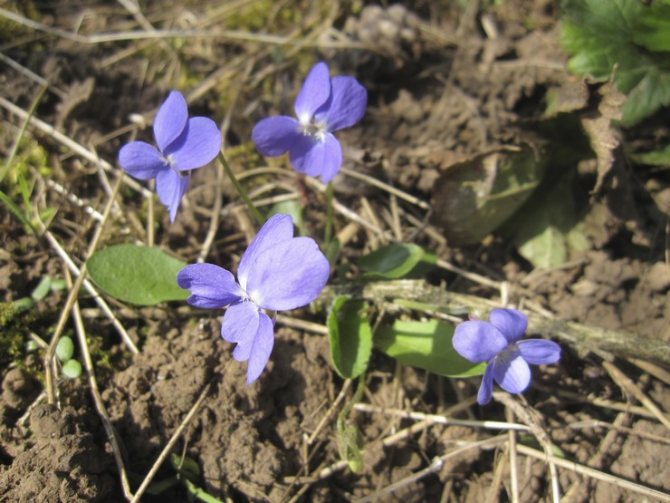

Planting viola seeds in open ground step by step:
- Prepare the site in advance: dig it up and fertilize if the soil is poor. For each square. meter add a bucket of humus and 1 liter of wood ash.
- Make grooves 10-15 cm apart.
- Sow the seeds and cover them with soil. Better yet, mulch the grooves with humus.
- Water the flower bed.
Keep the soil moist until the first shoots appear. Flowers planted in this way in May will begin to bloom at the end of August. If they are planted before winter, then flowering will begin in early spring.

